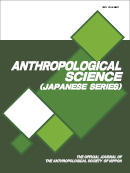Volume 124, Issue 2
Displaying 1-5 of 5 articles from this issue
- |<
- <
- 1
- >
- >|
Original Article
-
Article type: Original Article
2016 Volume 124 Issue 2 Pages 73-84
Published: 2016
Released on J-STAGE: December 20, 2016
Advance online publication: November 30, 2016Download PDF (2449K)
Material Research Report
-
Article type: Material Research Report
2016 Volume 124 Issue 2 Pages 85-91
Published: 2016
Released on J-STAGE: December 20, 2016
Advance online publication: November 17, 2016Download PDF (616K)
Material
-
Article type: Material
2016 Volume 124 Issue 2 Pages 93-148
Published: 2016
Released on J-STAGE: December 20, 2016
Download PDF (1111K)
Miscellaneous Report
-
Article type: Miscellaneous Report
2016 Volume 124 Issue 2 Pages 149-150
Published: 2016
Released on J-STAGE: December 20, 2016
Download PDF (299K)
Book Review
-
Article type: Book Review
2016 Volume 124 Issue 2 Pages 151-152
Published: 2016
Released on J-STAGE: December 20, 2016
Download PDF (396K)
- |<
- <
- 1
- >
- >|
